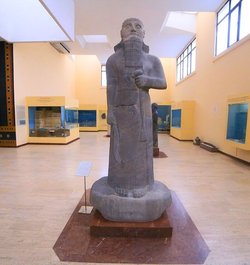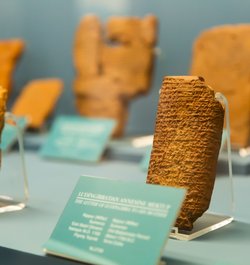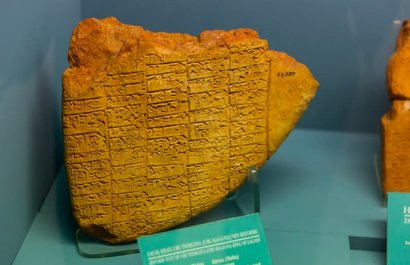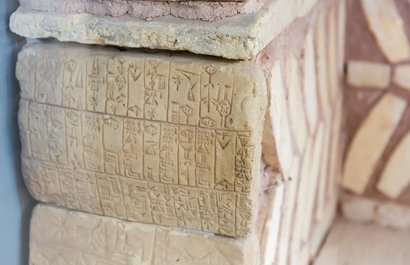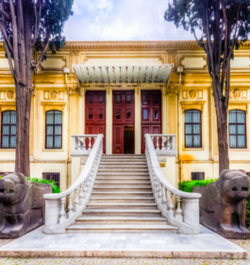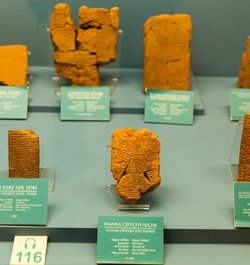Temporarily Closed Due to Restoration.
About This Activity
Highlights
- Discover the four amazing main exhibition sections in The Museum of the Ancient Orient: Mesopotamia, Egypt, Anatolia and Arabia
- Also, take the opportunity to see the first love poem written in the world!
- Opportunity to walk around this historic structure!
Includes
- Entry to Museum of the Ancient Orient
The Museum of the Ancient Orient
The Museum of the Ancient Orient is one of the main three units of the Istanbul Archaeological Museums. The other units are in the same location as the Istanbul Archaeological Museum and the Tiled Kiosk.
In the Museum of the Ancient Orient, there are exhibitions of unique collections of artworks belonging to the pre-Ionian eras of Anatolia and Mesopotamia and the pre-Islamic eras of Egypt and the Arabian Peninsula. Most of these artifacts were unearthed in archaeological excavations that started at the end of the 19th century and lasted until the First World War. They were brought to Istanbul, the capital of the Ottoman Empire of the era, which was the ruler of these aforementioned countries at the time.
The exhibitions in the museum are pre-Islamic Arabian, Egyptian, Mesopotamian, Anatolian, and Urartian artifacts and cuneiform documents such as the Stele of the Akkadian King Naramsi, the Treaty of Kadesh, the Ishtar Gate, and the Tablet Archives, which contain 75,000 cuneiform documents.
For this amazing experience and more, Buy Your Pass Now! Istanbul Tourist Pass® is here to make your Istanbul trip an unforgettable experience!
Times & Duration
Under Restoration
Where You'll Be
How to Get There?
Getting to the Museum of the Ancient Orient Entry Ticket is convenient and accessible from various parts of Istanbul. Here’s a guide to help you reach this iconic landmark:
The Museum is inside the Istanbul Archaeological Museums.
Take the T1 Bagcilar-Kabatas tram and get off at Gulhane station.
The museum is an easy 5-10 minute walk away.
All About Museum of the Ancient Orient
The History of the Museum’s Building
The building itself is a unique historical structure. It was built by Osman Hamdi Bey in 1883 as Sanayi-i Nefise Mektebi, better known as the Academy of Fine Arts. This academy, which would form the foundations of Mimar Sinan Fine Arts University in the future, is the first fine arts school opened in the Ottoman Empire.
The architect of the building was Alexander Vallaury, who would later build the Classical Building of the Istanbul Archaeological Museums. In 1917, after the academy was moved to another building in Cağaloğlu, this building was allocated to the Directorate of Museums. Halil Edhem Bey, the head of the Directorate of Museums, thought that it would be more appropriate to exhibit the works of ancient cultures of the Near East countries separately from the Greek, Roman, and Byzantine works, and he arranged the building as the Museum of the Ancient Orient.
During the Second World War, the Museum of the Ancient Orient was discharged for defense purposes. In 1963, a major arrangement was made in the museum structure, and it was opened to visitors in 1974. The Museum of the Ancient Orient gained its present form on September 8, 2000, and it has continued to serve as a tourist attraction ever since.
If you are visiting the Museum of the Ancient Orient, keep in mind that nearby a similar tourist attraction is located. The Museum of Turkish and Islamic Art is an impressive museum that combines Turkish and Islamic artifacts You can access this museum for free with Istanbul Tourist Pass.
Four Main Exhibition Sections in The Museum of the Ancient Orient
Mesopotamia: Findings from the Sumerian, Akkadian, Assyrian, and Babylonian civilizations are exhibited in a historical sequence documenting the development of Mesopotamia.
Egypt: Findings from 3000 BCE to 600 CE are on display. Some of them were gifted by Khedive Abbas Pasha in 1894, and some were found during several excavations in Anatolia. Among these works, there are stone or bronze statuettes, wooden sarcophagi, and burial find.
Anatolia: Early Bronze Age, Hittite Imperial Period, and Late Hittite Period finds are exhibited. There is also a wide variety of artifacts unearthed during the Zincirli and Karkamış excavations.
Arabia: This collection contains works related to the pre-Islamic cultures of the Arabian Peninsula. The most valuable parts of the Museum of the Ancient Orient mostly belong to the Assyrian King II. There is a statue of Salmanasar, a winged statue of the Hittite King Tuthalia IV, a relief depicting Assyrian soldiers with spears, a mummy from the 10th century, a statue of the Sumerian King Fudea, and many cuneiform clay plates.
The First Love Poem in History
There is a cuneiform tablet numbered “Istanbul #2461” in the Cuneiform Documents Archive of the Museum of Ancient Orient. The tablet was found in 1889 in the ancient Sumerian city of Nippur, located in the southeast of present-day Iraq.
It was deciphered by the American Assyrian and Sumerologist Samuel Noah Kramer, who came to Istanbul in 1951 and started working on the Sumerian tablets. It was translated into Turkish by Muazzez İlmiye Çığ. It soon became clear that on this cuneiform tablet, the world's oldest love poem was written. Its authenticity is confirmed by Guinness World Records.
Know Before You Go
- This is not a guided tour. Enjoy discovering the Istanbul Archaeological Museums at your own pace by listening to the specially curated audio Guide.
- The QR tickets are only shown when you are in close proximity to the entrance of the Istanbul Archaeological Museums.
- You need an Internet connection on your smartphone to get your QR tickets.
- Children will be asked to present their valid passports at the entrance of the museums in order to validate their age.
- You cannot enter with a suitcase.
- This museum is not wheelchair accessible.

.jpg)
